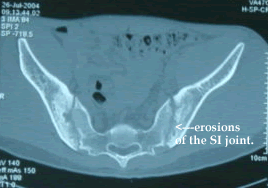
क्या ऐसा आपके साथ कभी हुआ है?
आपका एचएलए-बी 27 परीक्षण जो पहले पॉज़िटिव था वो बादमें नेगेटिव हो गया ? क्या आपने ऐसे विज्ञापन देखे है जिसमें कहा गया हो की कोई इलाज से आपका HLA B २७ नेगेटिव कर दिया जाएगा?
तकनीकी रूपसे, यह कभी नहीं हो सकता है । HLA-b27 एक जीन है और रक्तसमूह की तरह यह कभी नहीं बदल सकता है।उस मामलेमें, क्या गलत हो सकता है?
आइए अब समझते हैं कि एचएलए-बी 27 जीन का परीक्षण कैसे किया जाता है।
HLA B २७ टेस्ट तीन अलग पद्धति से की जाती है—
Microlymphocytotoxicity (MLCT) assay
Flowcytometry (FC)
DNA based typing using a Polymerase chain reaction based assay (PCR)
इन विधियों के बीच, पीसीआर आधारित विधि सबसे सटीक/ अच्छी है।
लैब्ज़ अलग अलग पद्धति से HLA B २७ टेस्ट करते है और इसके चलते कभी कभी HLA बी २७ के रिपोर्ट में फ़रक आ सकता है।
कुछ मरीज़ जो फ्लोसाइटोमेट्री पद्धति से HLA बी २७ नेगेटिव आते हैं; उनकी टेस्ट पीसीआर पद्धति से पॉज़िटिव आ सकती हैं।
फ़्लोसाइटोमेट्री से कभी कभी रिपोर्ट अनिश्चित ’(अनिर्णायक) आ सकती है, जिसे पीसीआर आधारित पद्धति से पुष्टि करने की आवश्यकता होती है। तो अगली बार जब आप HLA B २७ टेस्ट करे तब PCR पद्धति से ही करे। लैब से PCR पद्धति की माँग करे।
अगर आपने विज्ञापन देखे है जिनमे इलाज से HLA B २७ नेगेटिव करने की बात कही गयी हो तो उनपर विश्वास नहीं करे । यह मुमकिन नहीं है।
Image courtesy: Free Vectors via http://www.vecteezy.com















